Abstract
OBJECTIVES: To determine the frequency of major adverse events among patients awaiting coronary revascularization; to assess the match between referring physicians' estimates of urgency, a computer-generated multifactorial urgency rating score and actual waiting times; to determine the changes in waiting times as capacity for bypass surgery increased; and to evaluate the influence of choice of procedure or operator on waiting times. DESIGN: Consecutive case series. SETTING: Greater Toronto region. SUBJECTS: All 571 patients referred to an organized referral office by cardiologists at hospitals without on-site revascularization facilities between Jan. 3, 1989, and June 30, 1991. MAIN OUTCOME MEASURES: Preoperative fatal or nonfatal myocardial infarction; proportions of patients waiting longer than the maximum period recommended for their urgency rating; mean waiting times for various subgroups; and correlations among referring physicians' urgency ratings, computer-generated multifactorial urgency scores and waiting times. RESULTS: Of the 496 patients accepted for a procedure 5 had fatal cardiac events and 3 nonfatal myocardial infarction. Events occurred three times more often in patients with left mainstem disease than in those in other anatomic categories (relative risk [RR] 3.05, 95% confidence interval [CI] 1.48 to 6.27, p = 0.03). Both the computer-generated scores and the referring physicians' scores were correlated with the actual waiting time (r = 0.46 and 0.57 respectively). Waiting times and the proportion of patients with excessive waiting times fell during the study period (p < 0.0001). However, urgent cases were much less likely to be done "on time" than those with a recommended waiting time of more than 2 weeks (RR 0.16, 95% CI 0.11 to 0.25, p < 0.0001). The mean wait for coronary artery bypass grafting (CABG) was 22.73 days if the referral office was allowed to find a surgeon or interventional cardiologist and 35.31 days if one was requested (p = 0.002 after adjustment for urgency scores). CONCLUSIONS: Death of a patient on the waiting list is uncommon in an organized referral system. Patients with left main-stem disease are at higher risk of death than those in other anatomic categories. There were significant correlations between referring physicians' ratings of urgency, multifactorial urgency scores and actual waiting times. Expansion of capacity for CABG led to shorter waiting times, but patients with unstable symptoms continued to wait longer than recommended. Requests for a specific surgeon caused significantly longer delays.
Full text
PDF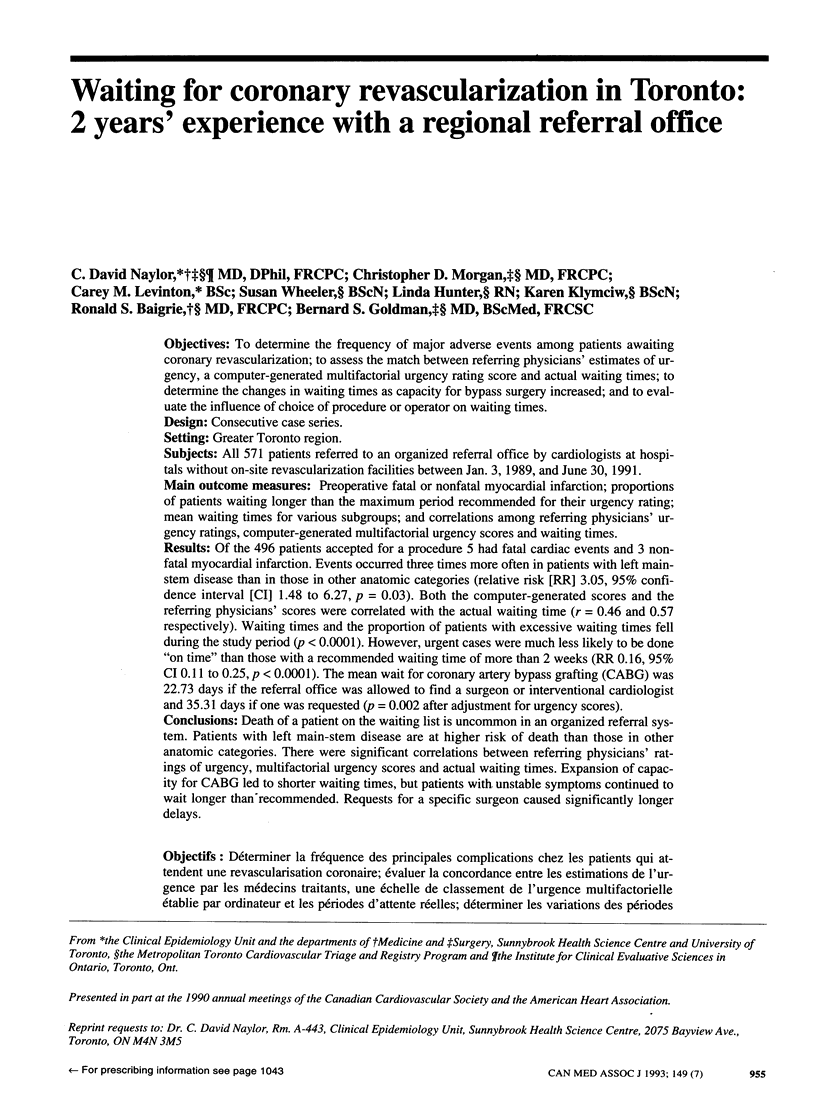
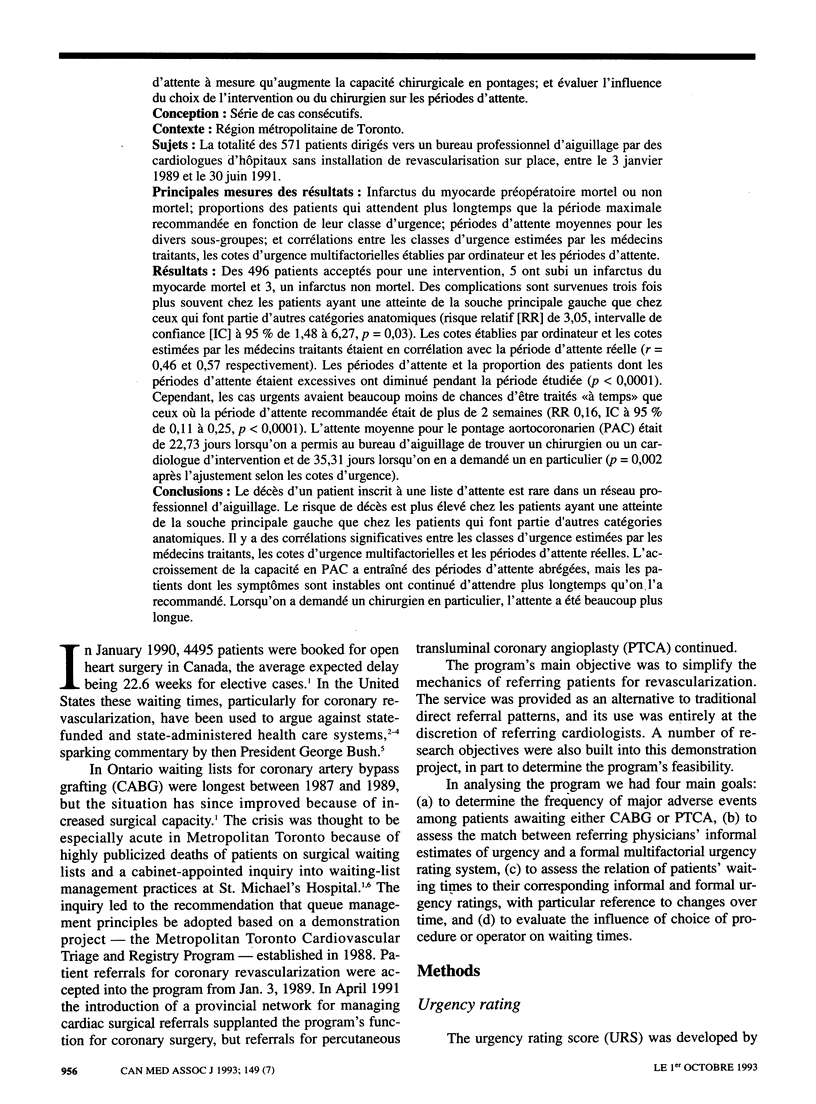
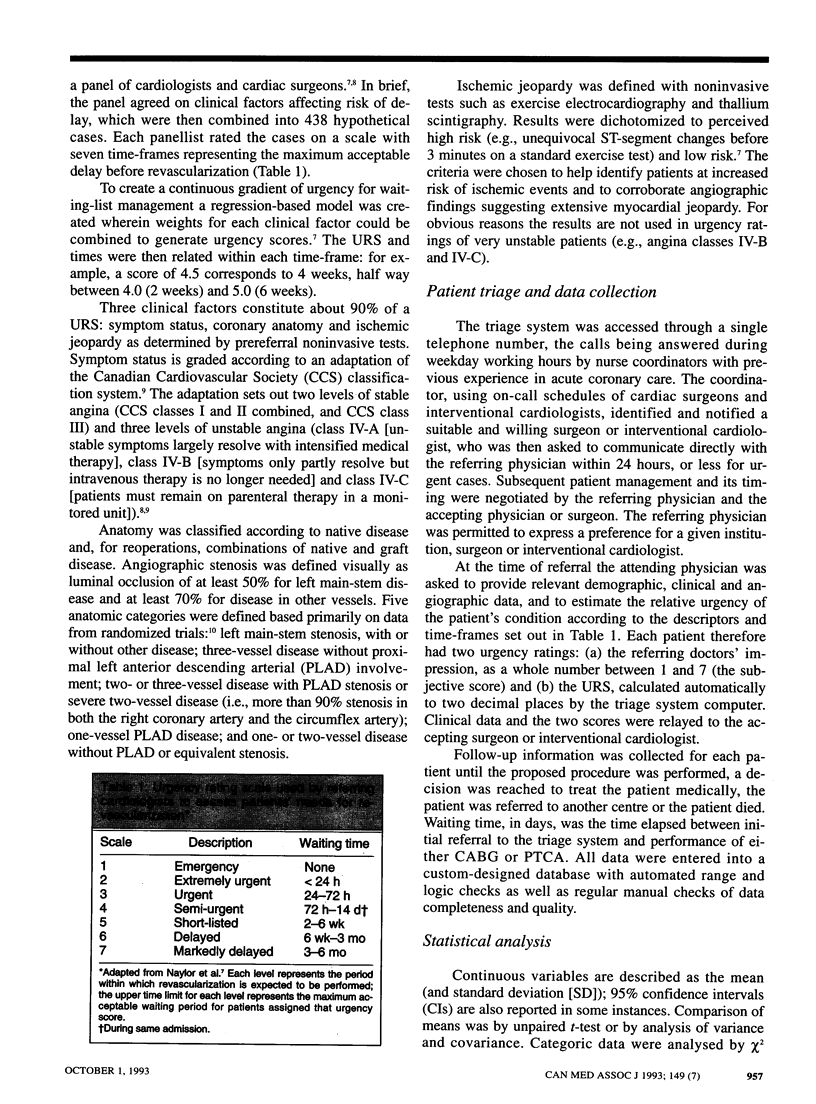
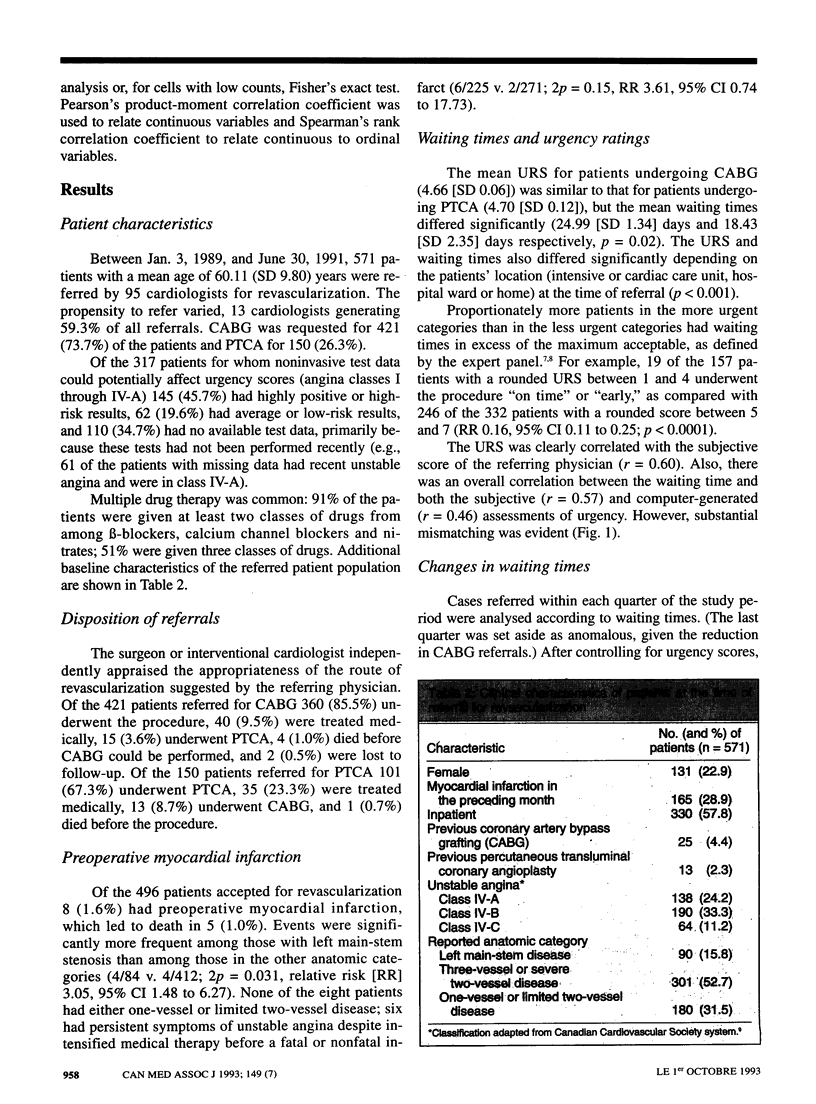
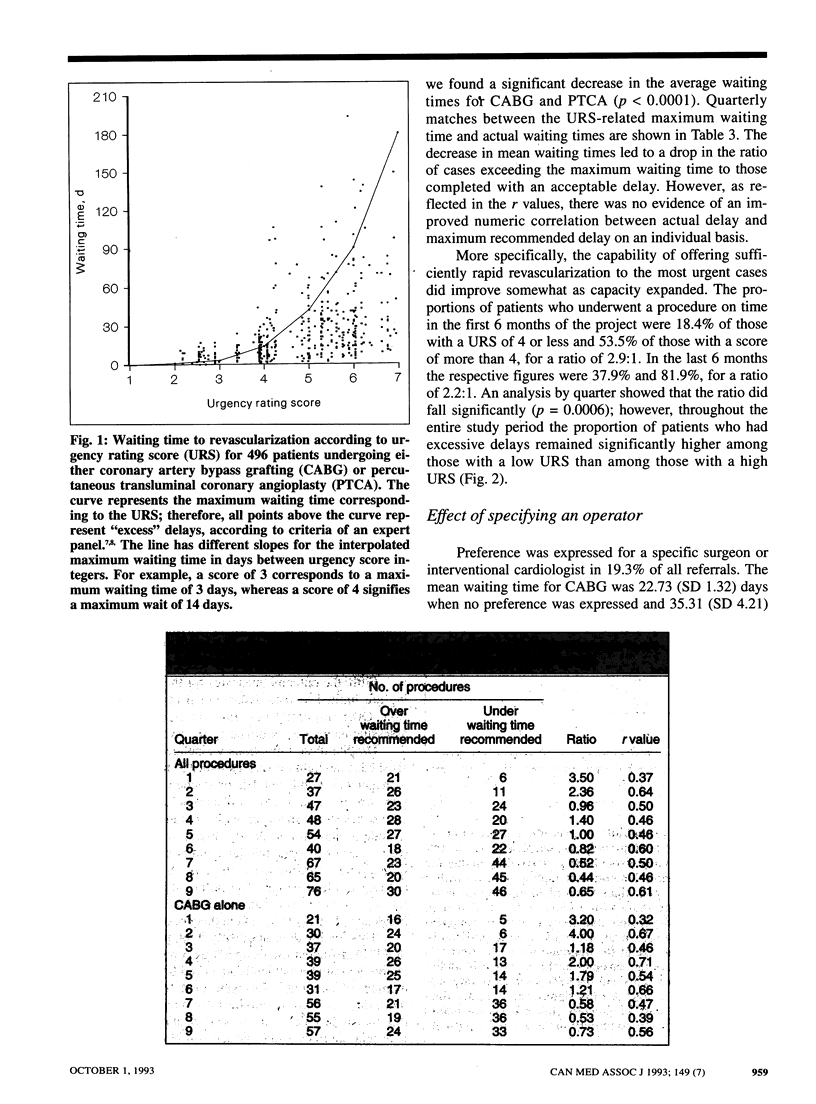
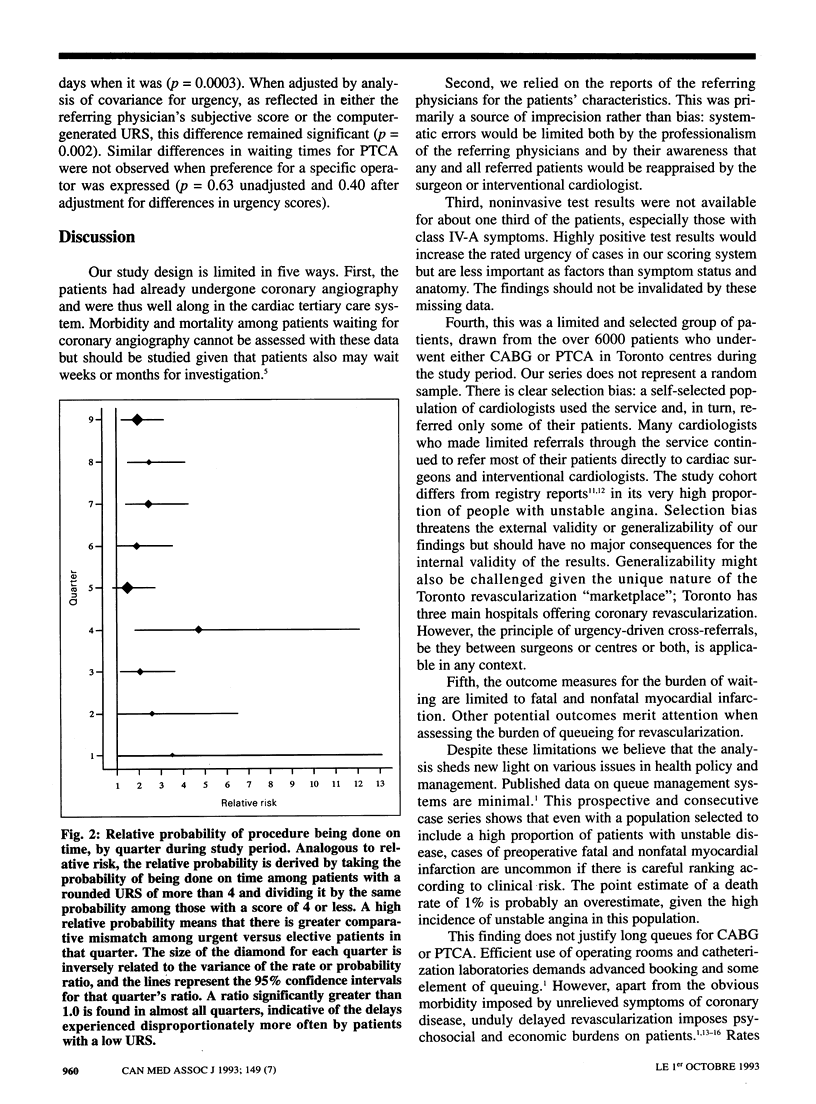
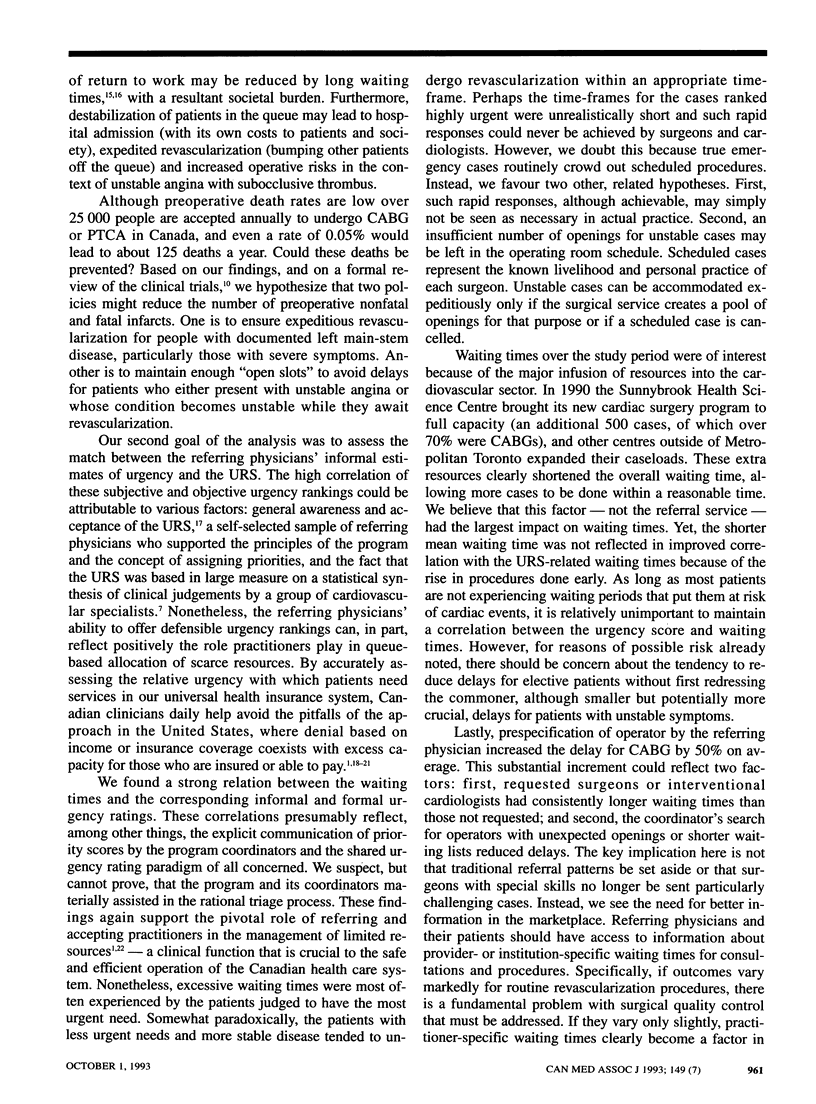
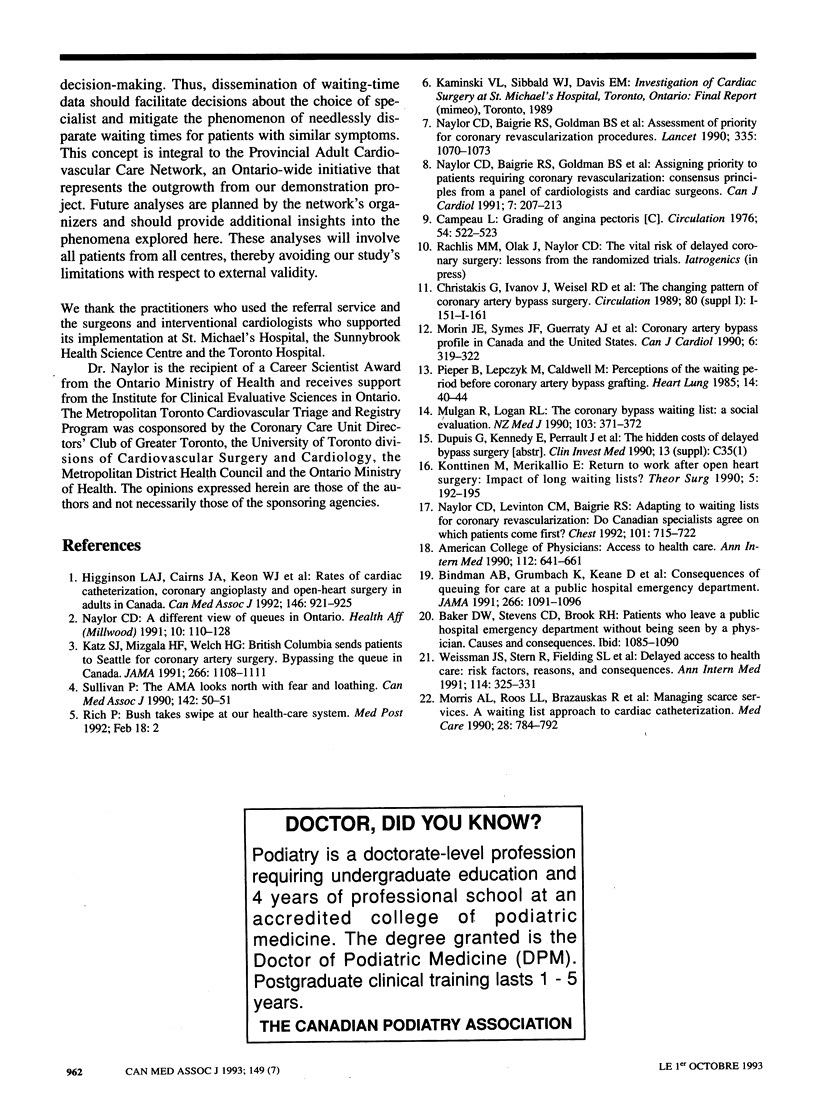
Selected References
These references are in PubMed. This may not be the complete list of references from this article.
- Bindman A. B., Grumbach K., Keane D., Rauch L., Luce J. M. Consequences of queuing for care at a public hospital emergency department. JAMA. 1991 Aug 28;266(8):1091–1096. [PubMed] [Google Scholar]
- Campeau L. Letter: Grading of angina pectoris. Circulation. 1976 Sep;54(3):522–523. [PubMed] [Google Scholar]
- Higginson L. A., Cairns J. A., Keon W. J., Smith E. R. Rates of cardiac catheterization, coronary angioplasty and open-heart surgery in adults in Canada. CMAJ. 1992 Mar 15;146(6):921–925. [PMC free article] [PubMed] [Google Scholar]
- Katz S. J., Mizgala H. F., Welch H. G. British Columbia sends patients to Seattle for coronary artery surgery. Bypassing the queue in Canada. JAMA. 1991 Aug 28;266(8):1108–1111. [PubMed] [Google Scholar]
- Morin J. E., Symes J. F., Guerraty A. J., Poirier N. L., Sampalis J. Coronary artery bypass profile in Canada and the United States. Can J Cardiol. 1990 Oct;6(8):319–322. [PubMed] [Google Scholar]
- Morris A. L., Roos L. L., Brazauskas R., Bedard D. Managing scarce services. A waiting list approach to cardiac catheterization. Med Care. 1990 Sep;28(9):784–792. [PubMed] [Google Scholar]
- Mulgan R., Logan R. L. The coronary bypass waiting list: a social evaluation. N Z Med J. 1990 Aug 8;103(895):371–372. [PubMed] [Google Scholar]
- Naylor C. D. A different view of queues in Ontario. Health Aff (Millwood) 1991 Fall;10(3):110–128. doi: 10.1377/hlthaff.10.3.110. [DOI] [PubMed] [Google Scholar]
- Naylor C. D., Baigrie R. S., Goldman B. S., Basinski A. Assessment of priority for coronary revascularisation procedures. Revascularisation Panel and Consensus Methods Group. Lancet. 1990 May 5;335(8697):1070–1073. doi: 10.1016/0140-6736(90)92640-4. [DOI] [PubMed] [Google Scholar]
- Naylor C. D., Baigrie R. S., Goldman B. S., Cairns J. A., Beanlands D. S., Berman N., Borts D., Fitchett D. H., Haq A., Hess A. Assigning priority to patients requiring coronary revascularization: consensus principles from a panel of cardiologists and cardiac surgeons. Can J Cardiol. 1991 Jun;7(5):207–213. [PubMed] [Google Scholar]
- Naylor C. D., Levinton C. M., Baigrie R. S. Adapting to waiting lists for coronary revascularization. Do Canadian specialists agree on which patients come first? Chest. 1992 Mar;101(3):715–722. doi: 10.1378/chest.101.3.715. [DOI] [PubMed] [Google Scholar]
- Pieper B., Lepczyk M., Caldwell M. Perceptions of the waiting period before coronary artery bypass grafting. Heart Lung. 1985 Jan;14(1):40–44. [PubMed] [Google Scholar]
- Sullivan P. The AMA looks north with fear and loathing. CMAJ. 1990 Jan 1;142(1):50–51. [PMC free article] [PubMed] [Google Scholar]
- Weissman J. S., Stern R., Fielding S. L., Epstein A. M. Delayed access to health care: risk factors, reasons, and consequences. Ann Intern Med. 1991 Feb 15;114(4):325–331. doi: 10.7326/0003-4819-114-4-325. [DOI] [PubMed] [Google Scholar]


